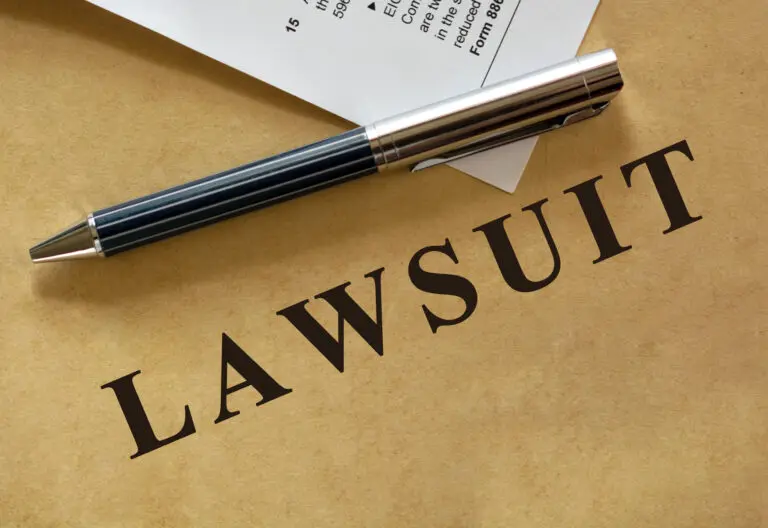Insolvency is a financial state where an individual or business can no longer meet its debt obligations. Understanding the legal definitions and remedies for insolvency is crucial for navigating financial distress and exploring options for debt relief. This article will provide an in-depth look at the key aspects of insolvency, including its legal framework, practical remedies, and the implications for those affected.
Legal Definitions of Insolvency
Insolvency is broadly defined under two main tests: the cash flow test y el balance sheet test. The cash flow test determines insolvency based on the inability to pay debts as they fall due. If a debtor cannot meet their short-term liabilities with available liquid assets, they are considered insolvent under this test.
The balance sheet test, on the other hand, assesses insolvency by comparing total liabilities to total assets. If the liabilities exceed the assets, indicating that the debtor’s financial obligations surpass their resources, the debtor is deemed insolvent. These definitions form the basis for legal proceedings and influence the strategies used for financial recovery.
Practical Remedies for Insolvency
When facing insolvency, it is essential to explore various financial remedies to mitigate the impact and seek recovery. One of the primary remedies is reestructuración de la deuda, which involves renegotiating the terms of debt with creditors. This process can include extending repayment periods, reducing the principal amount, or lowering interest rates to make debt more manageable.
Quiebra is another remedy for insolvency, providing a legal process through which debtors can discharge their obligations and start afresh. In the U.S., bankruptcy is governed by federal law, primarily through Capítulo 7 y Capítulo 13 filings. Chapter 7 allows for the liquidation of assets to pay off debts, while Chapter 13 involves creating a repayment plan to settle debts over time.
Case Studies: Successes and Failures
Consider the case of Company X, a manufacturing firm that faced insolvency due to declining sales and rising operational costs. By employing debt restructuring, Company X successfully renegotiated its debt terms with creditors, extending repayment periods and reducing interest rates. This strategy allowed the company to stabilize its finances, avoid bankruptcy, and eventually return to profitability.
In contrast, Individual Y, who faced significant personal debt, opted for Quiebra del capítulo 7. While this provided immediate relief from debt obligations, the process also resulted in the liquidation of most of their assets. This example underscores the importance of carefully considering the consequences of different insolvency remedies.
Comparative Analysis of Insolvency Laws
Insolvency laws vary significantly across jurisdictions, influencing how financial distress is managed. For example, U.S. bankruptcy laws are known for their debtor-friendly approach, allowing individuals and businesses to discharge debts and obtain a fresh start. In contrast, many European countries, like Germany, have more creditor-friendly insolvency laws that prioritize the repayment of debts over the discharge process.
Understanding these differences is crucial for multinational businesses and individuals with cross-border financial interests. Adapting strategies to align with local insolvency laws can improve the likelihood of favorable outcomes in different jurisdictions.
Desglose detallado de las consecuencias jurídicas
The legal consequences of insolvency can be severe, impacting both personal and professional aspects of life. For businesses, insolvency can lead to the appointment of a receiver or trustee who takes control of the company’s assets and operations. This can result in the sale of assets, the termination of contracts, and the layoff of employees.
For individuals, insolvency can lead to wage garnishment, loss of personal assets, and a significant impact on credit scores. These consequences can hinder future borrowing capacity and financial stability. Understanding these potential outcomes is essential for making informed decisions about insolvency remedies.
Step-by-Step Guide to Navigating Insolvency
- Assessment: Begin by conducting a thorough assessment of your financial situation. List all assets, liabilities, income, and expenses to determine your cash flow and balance sheet positions.
- Consulta: Seek professional advice from a qualified insolvency attorney or financial advisor. Discuss your options and the potential consequences of each remedy.
- Negociación: Engage in negotiations with creditors to explore debt restructuring possibilities. Present a realistic plan that demonstrates your ability to meet restructured payment terms.
- Declararse en quiebra: If restructuring is not feasible, consider filing for bankruptcy. Work with your attorney to prepare and submit the necessary documentation, and follow the legal process for discharging debts.
- Post-Insolvency Planning: Develop a financial recovery plan to rebuild your credit and stabilize your finances. This may include budgeting, saving, and seeking new income opportunities.
Technology and Tools in Insolvency Management
Technology plays a critical role in managing insolvency. Financial management software can help individuals and businesses track their financial positions, create budgets, and forecast cash flows. These tools provide valuable insights for making informed decisions and negotiating with creditors.
Additionally, online platforms offer resources and support for those facing insolvency. Websites like Abogados.Media provide directories of qualified insolvency attorneys, educational articles, and tools for understanding legal rights and options. Leveraging these technological resources can streamline the insolvency process and improve outcomes.
Cambios y tendencias legislativas
Insolvency laws are subject to ongoing changes and reforms. Recent trends include the introduction of more debtor-friendly policies aimed at providing relief and support for those facing financial distress. For example, the rise of consumer protection laws has led to increased scrutiny of predatory lending practices and more robust support systems for struggling borrowers.
Staying informed about these legislative changes is crucial for both debtors and creditors. Understanding new policies and regulations can help parties navigate the insolvency process more effectively and ensure compliance with current laws.
Ethical Considerations in Insolvency
Ethical considerations are paramount in the practice of insolvency law. Legal professionals must ensure that they act in the best interests of their clients while maintaining integrity and transparency. This includes providing accurate advice, avoiding conflicts of interest, and upholding the principles of fairness and justice.
For debtors, ethical behavior involves honest communication with creditors and adherence to negotiated agreements. Maintaining ethical standards throughout the insolvency process can build trust and improve the likelihood of successful outcomes.
Finding the Right Attorney for Insolvency Cases
When facing insolvency, it is essential to find an attorney with specialized expertise in insolvency law. Here are some steps to help you find the right legal representation:
- Investigación: Look for attorneys who specialize in insolvency and have a proven track record in handling cases similar to yours. Check online directories, read reviews, and consult with legal aid organizations for recommendations.
- Consultas: Schedule consultations with potential attorneys to discuss your case. Ask about their experience with insolvency cases, their approach to legal defense, and their familiarity with current insolvency laws and policies.
- Recomendaciones: Seek recommendations from trusted sources, such as friends, family, or community organizations. Personal referrals can provide valuable insights into an attorney’s reliability and effectiveness.
Un recurso fiable para encontrar abogados cualificados es Abogados.Media, which offers a comprehensive directory of legal professionals. By using this platform, you can search for attorneys based on their expertise, location, and client reviews, ensuring you find the best possible representation for your insolvency case.
FAQs about Insolvency
Q: What is the difference between insolvency and bankruptcy? A: Insolvency is a financial state where an individual or business cannot meet its debt obligations. Bankruptcy is a legal process that resolves insolvency by discharging debts or reorganizing financial affairs under court supervision.
Q: Can I avoid bankruptcy through debt restructuring? A: Yes, debt restructuring can be an effective way to avoid bankruptcy. By renegotiating the terms of your debt with creditors, you may be able to create a manageable repayment plan that prevents the need for bankruptcy.
Q: How can I rebuild my credit after insolvency? A: Rebuilding credit after insolvency involves creating a solid financial plan, maintaining timely payments, and using credit responsibly. It may take time, but with consistent effort, you can improve your credit score and financial stability.
Conclusión
Insolvency is a challenging financial state that requires a clear understanding of legal definitions and remedies. By exploring options such as debt restructuring, bankruptcy, and other financial remedies, individuals and businesses can navigate insolvency effectively. Seeking professional legal advice and staying informed about legislative changes can further support successful financial recovery and stability.
Reference URLs
- Insolvency: Legal Definitions and Remedies URL: https://www.americanbankruptcyinstitute.org
- Understanding Insolvency and Bankruptcy URL: https://www.nolo.com/legal-encyclopedia/what-is-insolvency.html
- Debt Restructuring Strategies URL: https://www.debt.org/solutions/debt-restructuring/
- Chapter 7 and Chapter 13 Bankruptcy Explained URL: https://www.uscourts.gov/services-forms/bankruptcy/bankruptcy-basics
- Comparative Insolvency Laws: U.S. vs. Europe URL: https://www.insolvencylawacademy.com/comparative-insolvency-law/
- Legal Consequences of Insolvency URL: https://www.legalzoom.com/articles/understanding-the-legal-consequences-of-insolvency
- Step-by-Step Guide to Bankruptcy Filing URL: https://www.consumer.ftc.gov/articles/0224-filing-bankruptcy-what-know
- Technology Tools for Managing Insolvency URL: https://www.techradar.com/best/accounting-software
- Recent Legislative Changes in Insolvency Law URL: https://www.abi.org/newsroom/headlines/recent-insolvency-law-reforms
- Ethical Considerations in Insolvency Practice URL: https://www.law360.com/articles/ethical-considerations-in-bankruptcy-law









